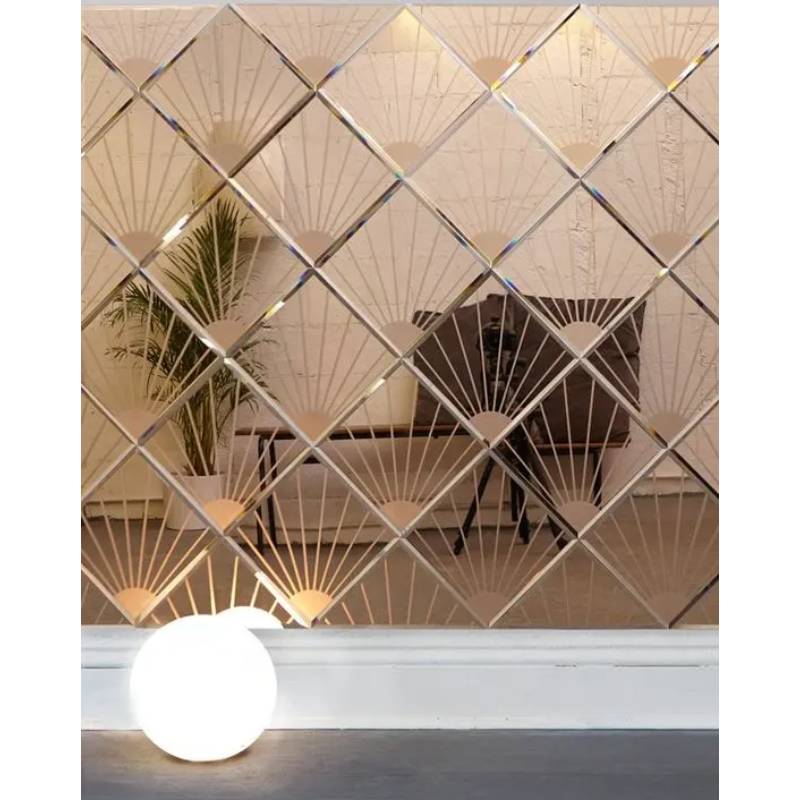The Art and Science of Tempered Glass Production
Tempered glass, also known as toughened glass, is a crucial material in modern construction, automotive design, and various applications requiring high durability and safety. Its production is a fascinating blend of art and science, transforming ordinary glass into a marvel of engineering that resists thermal stress and impact.
The journey of tempered glass begins with raw materials. The primary ingredient is silica sand, which is combined with soda ash and limestone to create glass. Other additives can include various metal oxides that enhance the glass’s strength and color. Once these materials are mixed and melted in a furnace at temperatures exceeding 1,700 degrees Fahrenheit (about 927 degrees Celsius), the resultant molten glass is then formed into sheets through various methods, depending on the desired final product.
The Art and Science of Tempered Glass Production
Tempering is a controlled heating and cooling process that significantly increases the strength of the glass. The glass sheets are heated to approximately 1,200 degrees Fahrenheit (about 650 degrees Celsius) and held at that temperature for a set duration. This heating phase ensures even temperature distribution, allowing the material to undergo a structural transformation.
tempered glass maker
Once the heating phase is complete, the glass sheets are rapidly cooled by a process known as quenching. High-volume air jets blow cool air onto the surface of the heated glass, leading to a rapid temperature drop. This sudden cooling causes the outer surfaces of the glass to contract faster than the inner layers, creating a state of compressive stress on the outside. This unique balancing of internal stresses makes tempered glass about four to five times stronger than standard (annealed) glass of the same thickness.
In addition to its strength, tempered glass has notable safety advantages. When broken, it shatters into small, blunt pieces rather than sharp shards, minimizing the risk of injury. This characteristic makes tempered glass the preferred choice for high-traffic areas, building facades, shower doors, and even glass furniture.
The versatility of tempered glass extends beyond physical properties. It can be manufactured in a variety of colors and finishes, including frosted, tinted, or reflective options, allowing architects and designers to play creatively with light and aesthetics. Furthermore, tempered glass can be laminated or coated for added functionalities, such as UV protection or sound insulation.
With the increasing demand for sustainable building materials, tempered glass has also gained attention for its energy efficiency. It plays a significant role in modern energy-efficient designs, helping to reduce heat loss and improve insulation in buildings. When used in double or triple glazing systems, tempered glass enhances thermal performance, contributing to lower energy consumption in residential and commercial buildings.
In conclusion, the production of tempered glass is a complex yet fascinating process that marries art with science, resulting in a safe, strong, and versatile material that continues to shape our environments. From its raw materials to its transformative tempering process, tempered glass exemplifies innovation in material science. As we look toward the future, its applications are only set to expand, underscoring its vital role in sustainable design and safety in our daily lives. Ensuring high standards in production and quality control, tempered glass makers are crucial to delivering these exceptional products that blend functionality with artistry.
 Afrikaans
Afrikaans  Albanian
Albanian  Amharic
Amharic  Arabic
Arabic  Armenian
Armenian  Azerbaijani
Azerbaijani  Basque
Basque  Belarusian
Belarusian  Bengali
Bengali  Bosnian
Bosnian  Bulgarian
Bulgarian  Catalan
Catalan  Cebuano
Cebuano  Corsican
Corsican  Croatian
Croatian  Czech
Czech  Danish
Danish  Dutch
Dutch  English
English  Esperanto
Esperanto  Estonian
Estonian  Finnish
Finnish  French
French  Frisian
Frisian  Galician
Galician  Georgian
Georgian  German
German  Greek
Greek  Gujarati
Gujarati  Haitian Creole
Haitian Creole  hausa
hausa  hawaiian
hawaiian  Hebrew
Hebrew  Hindi
Hindi  Miao
Miao  Hungarian
Hungarian  Icelandic
Icelandic  igbo
igbo  Indonesian
Indonesian  irish
irish  Italian
Italian  Japanese
Japanese  Javanese
Javanese  Kannada
Kannada  kazakh
kazakh  Khmer
Khmer  Rwandese
Rwandese  Korean
Korean  Kurdish
Kurdish  Kyrgyz
Kyrgyz  Lao
Lao  Latin
Latin  Latvian
Latvian  Lithuanian
Lithuanian  Luxembourgish
Luxembourgish  Macedonian
Macedonian  Malgashi
Malgashi  Malay
Malay  Malayalam
Malayalam  Maltese
Maltese  Maori
Maori  Marathi
Marathi  Mongolian
Mongolian  Myanmar
Myanmar  Nepali
Nepali  Norwegian
Norwegian  Norwegian
Norwegian  Occitan
Occitan  Pashto
Pashto  Persian
Persian  Polish
Polish  Portuguese
Portuguese  Punjabi
Punjabi  Romanian
Romanian  Russian
Russian  Samoan
Samoan  Scottish Gaelic
Scottish Gaelic  Serbian
Serbian  Sesotho
Sesotho  Shona
Shona  Sindhi
Sindhi  Sinhala
Sinhala  Slovak
Slovak  Slovenian
Slovenian  Somali
Somali  Spanish
Spanish  Sundanese
Sundanese  Swahili
Swahili  Swedish
Swedish  Tagalog
Tagalog  Tajik
Tajik  Tamil
Tamil  Tatar
Tatar  Telugu
Telugu  Thai
Thai  Turkish
Turkish  Turkmen
Turkmen  Ukrainian
Ukrainian  Urdu
Urdu  Uighur
Uighur  Uzbek
Uzbek  Vietnamese
Vietnamese  Welsh
Welsh  Bantu
Bantu  Yiddish
Yiddish  Yoruba
Yoruba  Zulu
Zulu 

